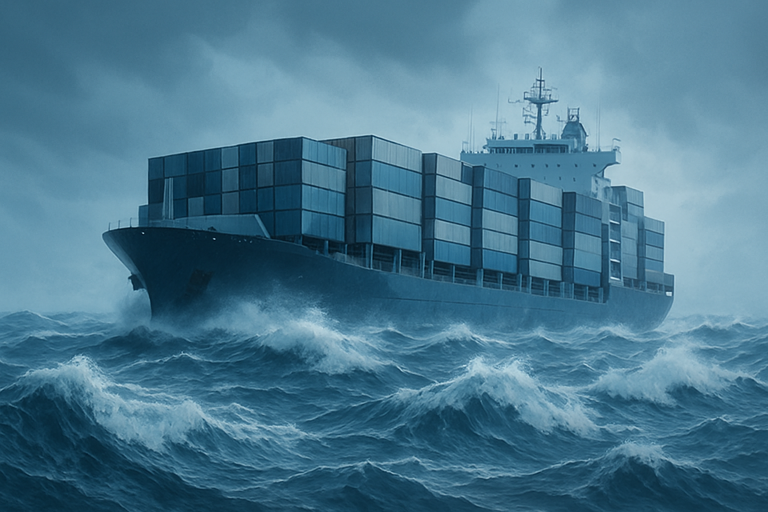The escalating trade war, on and off tariffs, geopolitical tensions, and widespread uncertainty, are disrupting established global norms. Artificial Intelligence (AI) lies at the heart of this crisis. Accelerated adoption of AI presents both a transformative opportunity and potentially chaos.
Trade War: A Catalyst for AI Adoption
The current trade war, with its unpredictable policies and shifting alliances, is exerting unprecedented pressure on businesses. Companies are no longer able to rely on the stability of global supply chains, forcing them to prioritize resilience and agility. In this environment, AI is emerging as a critical tool for navigating uncertainty and maintaining competitiveness.
AI-driven automation, allows manufacturers to reduce their reliance on labor and establish production facilities in more stable locations, mitigating the impact of tariffs and geopolitical risks. AI is also being used to optimize supply chains, dynamically rerouting orders and adjusting production in response to trade policy changes.
Crisis as a Driver of Technological Change
While the trade war presents a unique set of challenges, history offers several examples of how crises have accelerated technological adoption.
During World War II the development of radar, sonar, jet engines, rockets, and even early computing all advanced rapidly under wartime pressure.
More recently, 9/11 caused the transformation of the global bond trading markets, when the world’s largest bond trading company was decimated in the attack. Bond trading moved from a phone-based process to online overnight.
COVID-19 caused a surge in home based work, tele-medicine and online learning. Video conferencing services like Zoom became a household name overnight.
These historical precedents demonstrate how crises can remove a “status quo bias” and create an environment where new technologies are rapidly embraced.
The trade war in 2025 has become yet another inflection point in the history of technology and it’s happening at the moment when AI and AI assisted robotics are ready to pick up the slack.
AI’s Role in Agile Manufacturing
The trade war is driving the adoption of “agile manufacturing,” a production method that emphasizes flexibility, adaptability, and speed. AI plays a crucial role:
- Analyzing real-time data to monitor disruptions and assess risks.
- Optimizing supply chains and logistics.
- Reprogramming robots for different tasks.
- Facilitating rapid production adjustments.
This AI-driven agility raises the question of whether it could undermine the intended effects of trade policies by enabling companies to quickly shift production, circumvent barriers and avoid creating the jobs politicians want.
Economic and Social Implications of AI in the Trade War
The increasing use of AI in response to the trade war has significant economic and social implications:
- Increase efficiency and resilience for companies.
- Lead to job displacement in manufacturing.
- Drive the development of new, high-tech production facilities.
- Necessitate reskilling and upskilling initiatives for the workforce.
- Move manufacturing closer to costal cities where skilled technicians can be found.
AI-Driven Agility and Geopolitical Risk
The ongoing trade war is likely to accelerate the development of AI-driven technologies that enable agile manufacturing and supply chains:
- Modular, “plug-and-play” factories that can be quickly reconfigured or relocated.
- AI-powered systems for real-time risk assessment and supply chain optimization.
- AI-driven design tools that can adapt production lines to changing conditions.
However, the geopolitical tensions that are driving AI adoption also create significant risks:
- Challenges to AI Safety and Governance: The trade war and geopolitical fragmentation hinder global cooperation on AI safety standards, potentially leading to divergent regulations and an “AI arms race”.
- Vulnerability of the Chip Supply Chain: The concentration of advanced chip manufacturing in Taiwan (TSMC) creates a critical vulnerability. A conflict in the region could severely disrupt AI development.
Conclusion
The trade war is undeniably accelerating the adoption of AI, driving innovation and potentially creating more agile and resilient industries.
However, this acceleration is accompanied by significant risks, particularly concerning AI safety and the fragility of the global chip supply chain.
AI and AI aided robotics will almost certainly frustrate the goals of politicians wishing to create traditional manufacturing jobs in the regions where these jobs were formerly found. The relatively small numbers of technically skilled workers needed for these new agile manufacturing facilities will more likely be found near urban centers.











